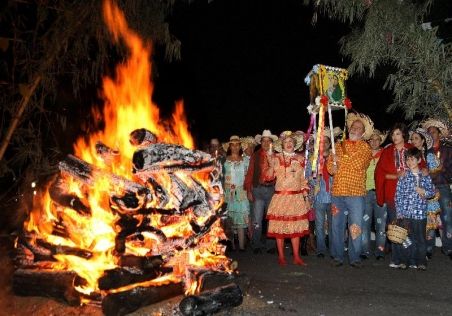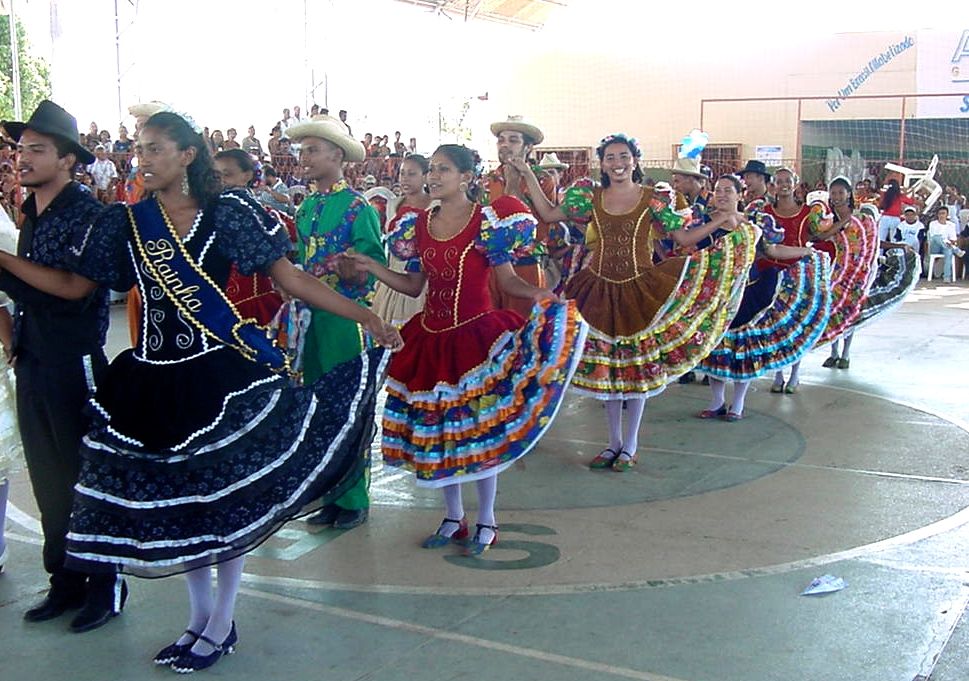Brazil is so much more than just Carnaval and soccer. We have just passed through one of the most delightful and culturally rich periods of the year... Festa Junina. For those of you who are newcomers to Brazil, visitor or anyone else who doesn't have a full understanding of the roots of Festa Junina I will give a brief summary.
The typical June festivals are to celebrate Saint Anthony - June 13, Saint John - June 24 and Saint Peter - June 29. These celebrations are steeped in traditions that for the most part were brought to Brazil from Europe during colonization.
Bonfires and Mast with image of St. John - The tradition of lighting bonfires and the mast comes from the story that Saint Isabel (Mother of John the Baptist) had agreed to light a large bonfire and raise a mast in order to inform Mary (Mother of Jesus) of the birth of her baby John.
Quadrilha (square dance)and Caipira Wedding - as the story goes the dance was brought from France, it tells the story of a wedding. Here it has become a caipira (hillbilly) wedding complete with the pregnant bride-to-be, reluctant groom and irate father of the bride with his shotgun who obliged the couple to wed.
Festa Junina penants - Originally the flags were much larger and had images of the saints. These were soaked in water (The traditional Washing of the Saints) which in turn were passed over the festival participants as a form of purification. They evolved into smaller multicolored penants that still serve the same purpose.
The most wonderful part of all is the great variety of regional dishes that have become associated with Festa Junina. The Brazilian culture is very rich indeed. ENJOY!
Cheers,
William James Woodward - Brazil Animator, Expat-blog
The history of Festa Junina in Brazil
Festa Junina (June Festivals)
Well, it's soon going to be that time of year again. Personally I find Brazil's Festa Junina celebrations much more interesting and culturally diversified than Carnaval ever could be. It is celebrated all across the country and each area gives it their own personal touch.
Festa Junina. For those of you who are newcomers to Brazil, visitor or anyone else who doesn't have a full understanding of the roots of Festa Junina I will give a brief summary. Festa Junina is probably second only to Carnaval in popularity with the Brazilian people.
The typical June festivals are to celebrate Saint Anthony - June 13, Saint John - June 24 and Saint Peter - June 29. These celebrations are steeped in traditions that for the most part were brought to Brazil from Europe during colonization.
Bonfires and Mast with image of St. John - The tradition of lighting bonfires and the mast comes from the story that Saint Isabel (Mother of John the Baptist) had agreed to light a large bonfire and raise a mast in order to inform Mary (Mother of Jesus) of the birth of her baby John. The quadrilha
The quadrilha
Quadrilha (square dance)and Caipira Wedding - as the story goes the dance was brought from France, it tells the story of a wedding. Here it has become a caipira (hillbilly) wedding complete with the pregnant bride-to-be, reluctant groom and irate father of the bride with his shotgun who obliged the couple to wed. Casamento Caipira (Hillbilly Wedding).
Casamento Caipira (Hillbilly Wedding).
Festa Junina penants - Originally the flags were much larger and had images of the saints. These were soaked in water (The traditional Washing of the Saints) which in turn were passed over the festival participants as a form of purification. They evolved into smaller multicolored penants that still serve the same purpose.
The most wonderful part of all is the great variety of regional dishes that have become associated with Festa Junina. If you get the chance to participate in any of the celebrations that are taking place, you really shouldn't pass it up. One word of advice though, leave any diet at home and just enjoy yourself.
The Brazilian culture is very rich indeed.
Cheers,
James









